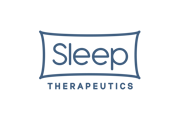Learn about in-lab and home sleep tests, their uses, and how they diagnose sleep disorders.
A sleep study, also known as polysomnography, is a comprehensive medical evaluation designed to monitor various physiological functions during sleep, facilitating the diagnosis of sleep disorders. Throughout the study, sensors are attached to your body to track essential parameters such as brain activity, eye movements, heart rate, muscle tone, and breathing patterns. The collected data is then meticulously analyzed to detect any potential sleep disorders.
There are several types of sleep studies available:
In-Lab Sleep Study: This is the most comprehensive option, conducted in a specialized sleep center. You will spend a night in a sleep lab where a trained technician closely observes your sleep using an array of sensors and equipment.
Home Sleep Test: This study prioritizes convenience, allowing you to undergo testing in the comfort of your own home. It employs a portable device that monitors your breathing patterns, heart rate, and oxygen saturation levels.
WatchPAT One Sleep Study: WatchPAT One is a single-use home sleep test that utilizes peripheral arterial tone (PAT) technology to collect data on your breathing patterns, oxygen levels, and heart rate.
Each type of sleep study is tailored to diagnose different sleep disorders, offering distinct advantages and limitations. The in-lab sleep study provides the most detailed information but can be the least convenient option. In contrast, home sleep tests and WatchPAT studies are more accessible and cost-effective alternatives.
If you are experiencing symptoms suggestive of a sleep disorder—such as loud snoring, excessive daytime sleepiness, insomnia, or episodes of interrupted breathing during sleep—a sleep study may be advisable. Furthermore, the findings from a sleep study can help evaluate the severity of any identified sleep disorder and guide appropriate treatment options.
